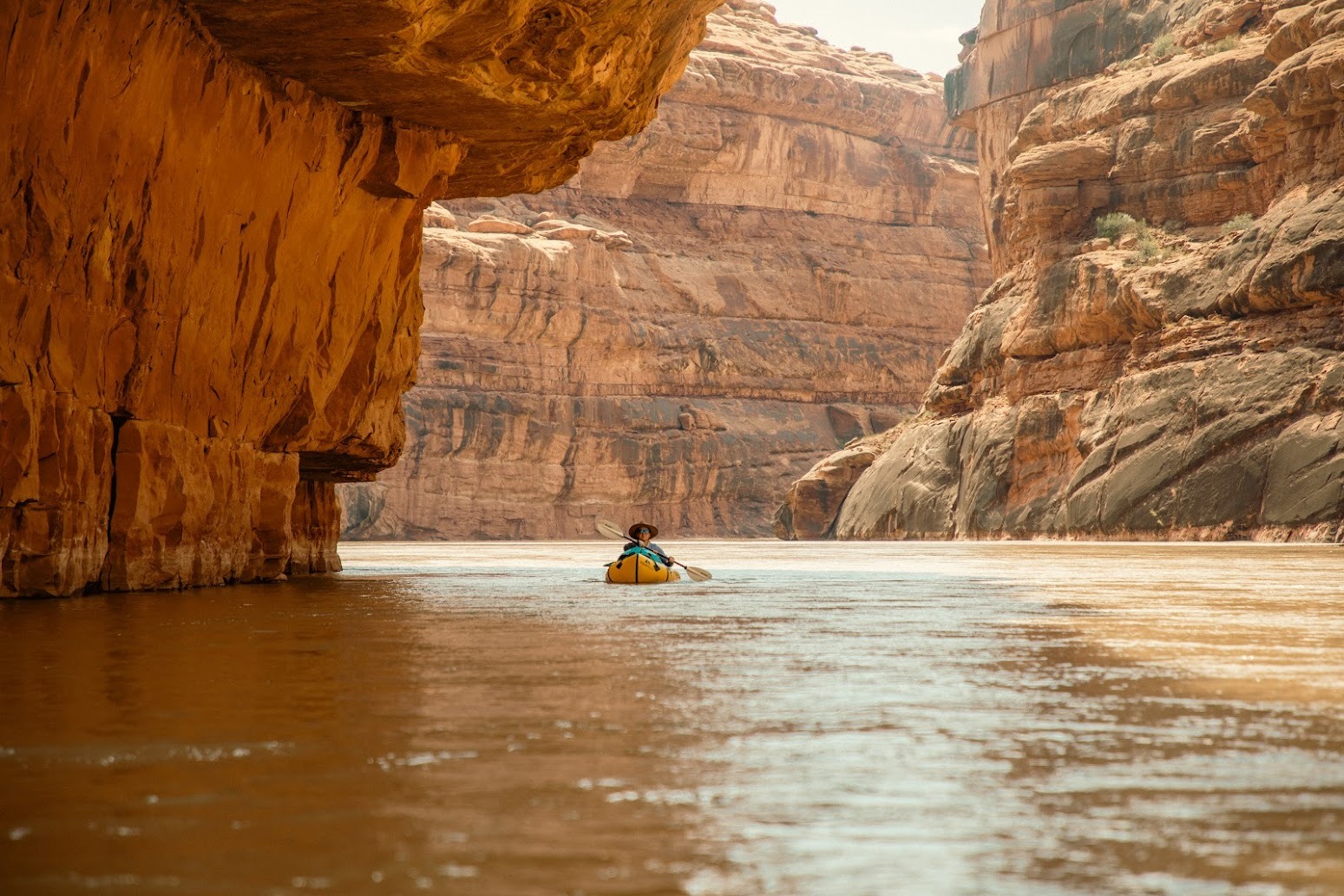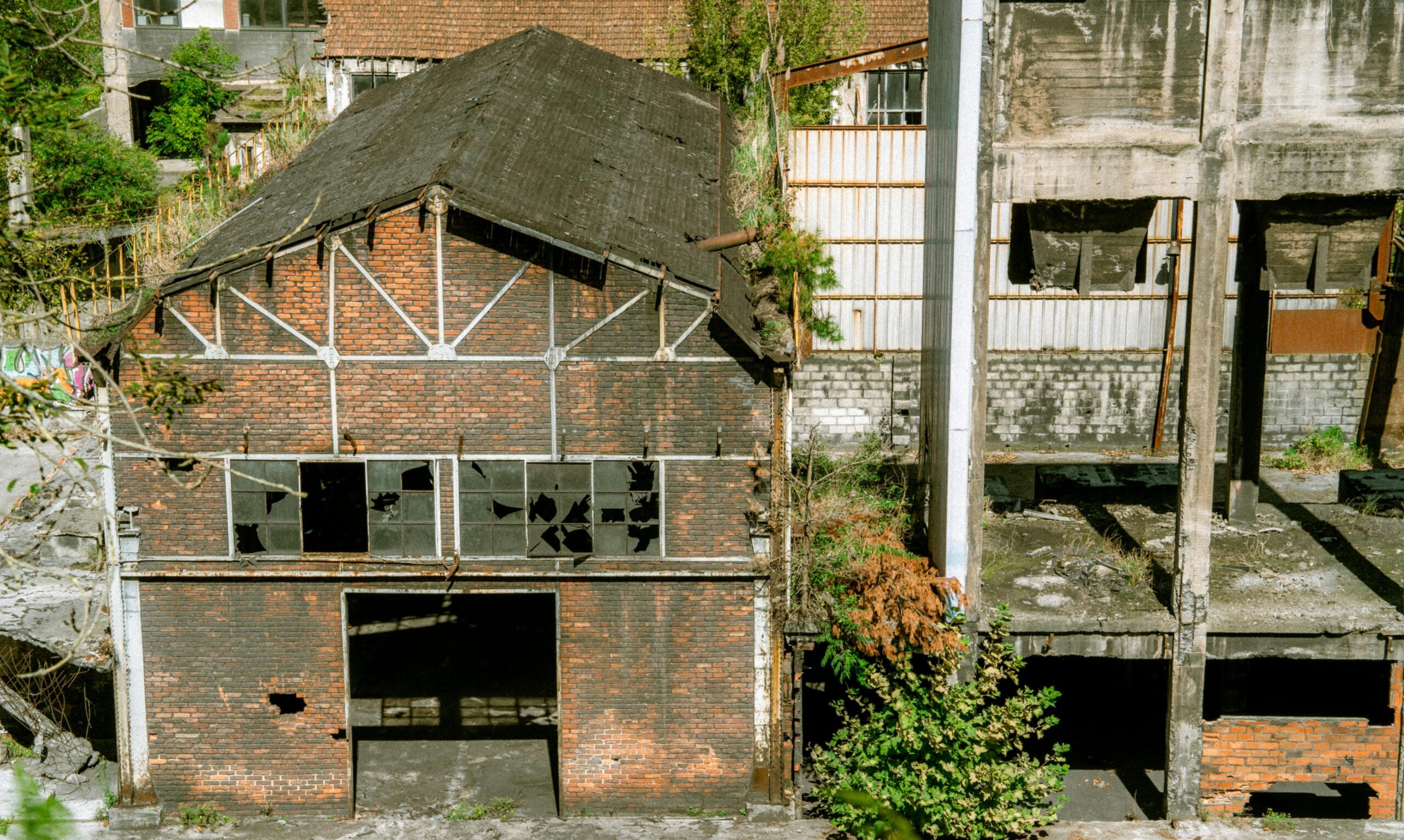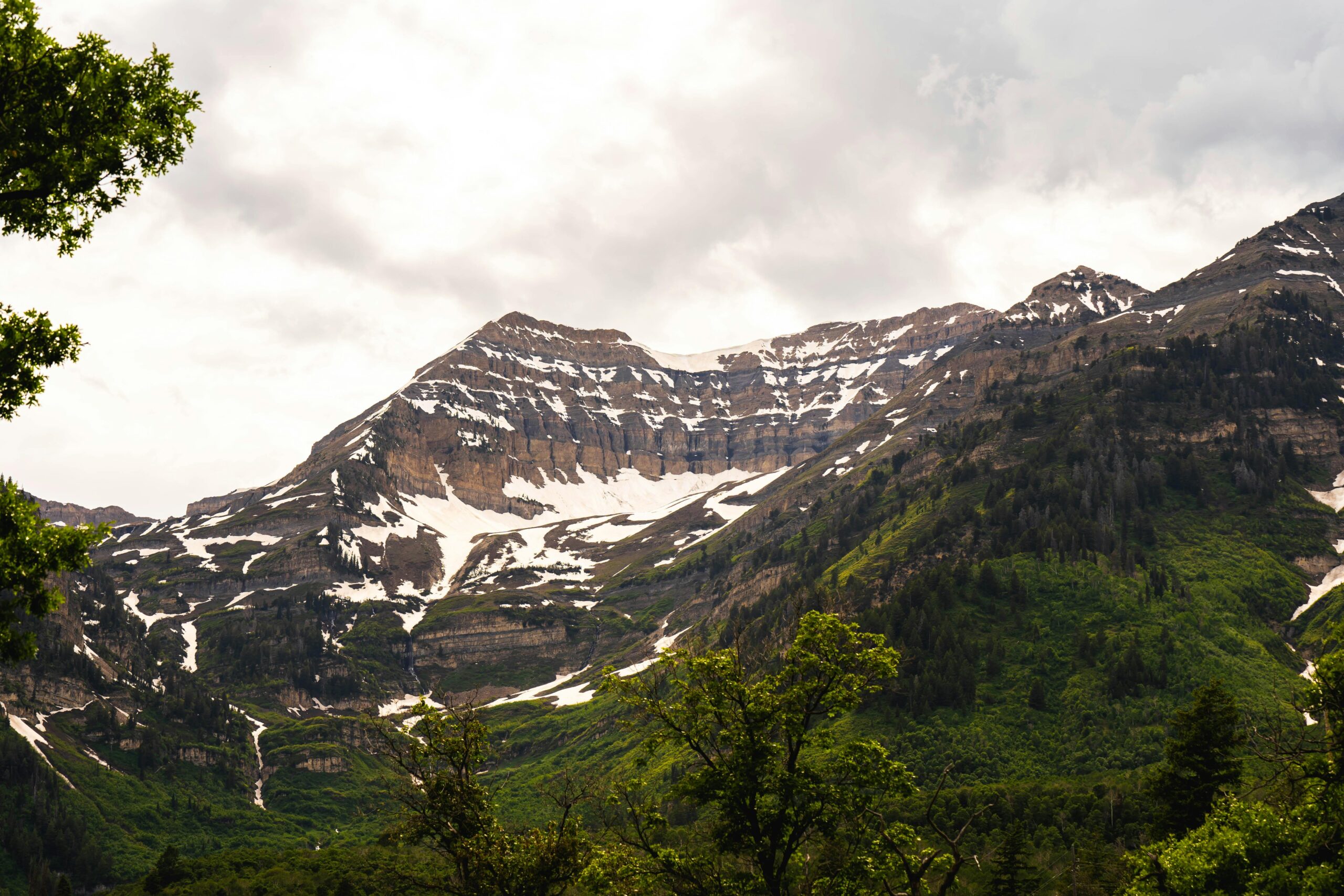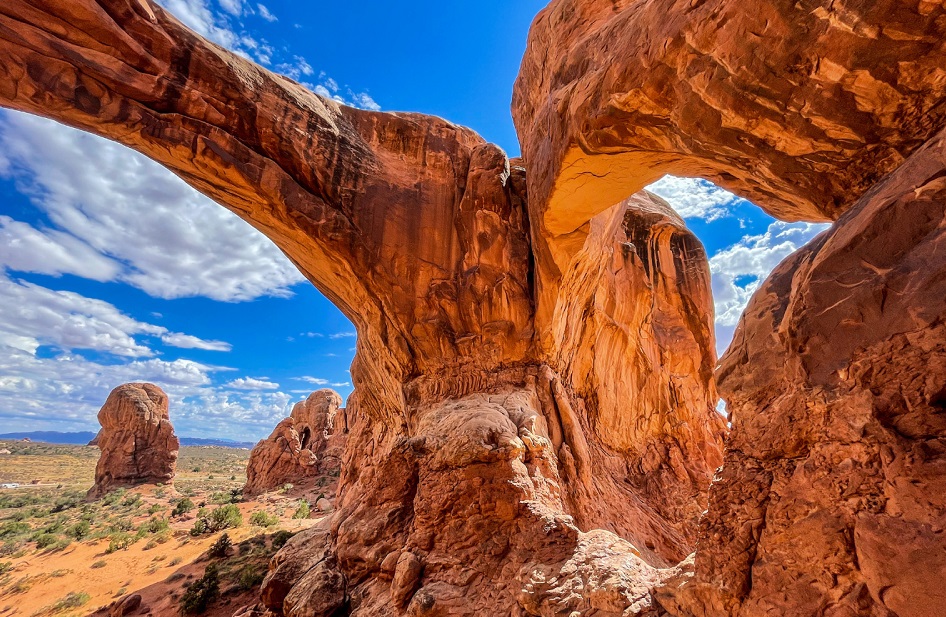
- April 7, 2025
- Traveler
- 0
People travel from all over the globe to see the geologic artwork of Utah’s canyon country—layers of red, orange, and brown rocks. Rivers winding through deep, narrow canyons. Sandstone eroded into mushroom-shaped hoodoos and arches that are large enough to fly a plane through. And most visitors are drawn to the area by the photos they’ve seen.
Here are five scenic overlooks that will make you thankful you don’t have to buy film for your camera anymore. So, snap away…or better yet, put the camera down for a spell and take in the power of nature through your senses rather than through a lens.
Goosenecks of the San Juan
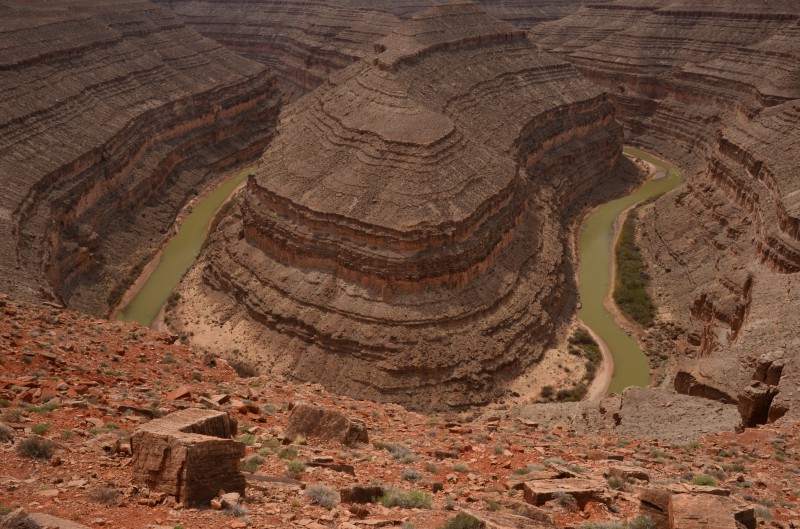
Goosenecks State Park may not offer much in the way of amenities, but that’s not why you come here. Just a few steps from your car, you’ll gaze down upon a scene that makes geologists downright giddy. About 1,000 feet below the rim, the San Juan River has carved a deep canyon that snakes around three tight turns called the “goosenecks.” This section of the river has so many hairpin loops that it actually flows for six miles while only advancing about a mile and a half in distance “as the crow flies.”
Millions of years ago, the San Juan River flowed on a fairly flat plain. During a period of geological uplift, the landscape rose, causing the river to cut into the land and carve the meanders that are visible today from the Goosenecks overlook. Many geologists consider this to be the best example of an entrenched meander in the world, and it is without a doubt one of the most impressive sights in the American Southwest.
Dead Horse Point

Tell the animal lovers in your group not to worry—you won’t see any dead horses lying around. What you will find is one of Utah’s most inspiring views from about 2,000 feet above the Colorado River. It’s often said that the view from Dead Horse Point rivals that of the Grand Canyon. Although the Grand is a geologic panorama on a much larger scale, the same erosional forces created the vista you see from Dead Horse Point. The rock strata visible from the overlook are the result of more than 300 million years of erosional history, from the Pennsylvanian to the Jurassic Period. The most prominent feature to the southwest is the Gooseneck of the Colorado, where the river snakes its way around a tight bend. Here, the river flows for about four miles while only advancing a quarter mile in actual distance.
An interesting side note: Thelma and Louise took their famous final plunge from a plateau off the Shafer Trail below Dead Horse Point, which served as a “stunt double” for the Grand Canyon in the movie.
Green River Overlook
When you visit the Island in the Sky section of Canyonlands National Park, you’ll have plenty to see from the mesa’s cliffs that tower about 1,000 feet above the terrain below. But the Green River Overlook is one vista you shouldn’t miss (Hollywood obviously agrees…movie scenes from Mission Impossible 2 and The Greatest Story Ever Told were shot here). Just a short walk from the parking area is a panoramic view of the Green River as it meanders through the calm waters of Stillwater Canyon. If you happen to be here when a summer monsoon is blowing in, you might catch some amazing shots of distant thunderstorms, colorful clouds, or even lightning. This is one of my favorite places in canyon country to just sit and stare. The silence here is powerful—even if you’re not alone at the viewing area, you can still find your own canyon-gazing solitude by just walking a few steps away from the overlook.
Hite Crossing and Overlook
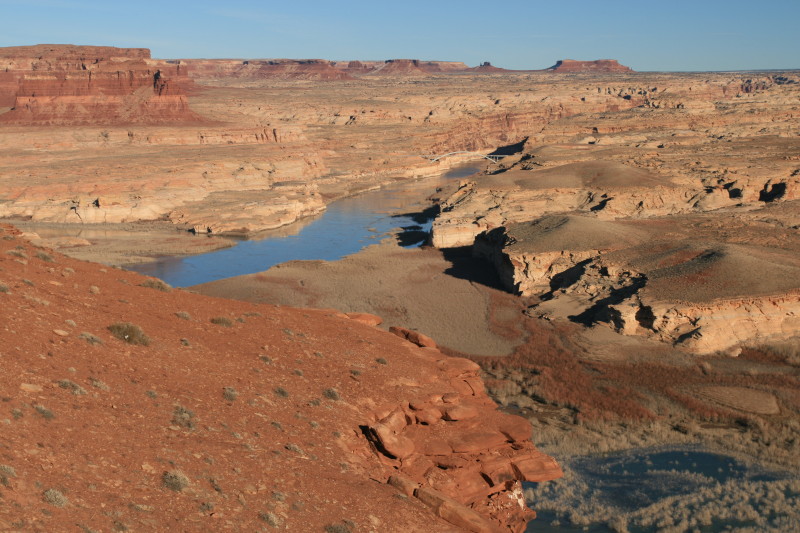
Back in the 1940s, a ferry at the tiny settlement of Hite was one of the few places in the region where people could cross the Colorado River, making it possible to travel by vehicle between Hanksville and Blanding. Today, you can cross the Colorado at Hite in a more modern way—via the Hite Crossing Bridge. Completed in 1966, the scenic arch bridge is the only automobile crossing of the Colorado River between Moab (110 miles upstream) and the Glen Canyon Bridge (185 miles downstream). About one mile before you reach Hite Crossing, stop at the Hite Overlook for a distant view of the bridge and a spectacular panorama of Lake Powell and the abandoned Hite Marina in Glen Canyon National Recreation Area.
Head of the Rocks Overlook
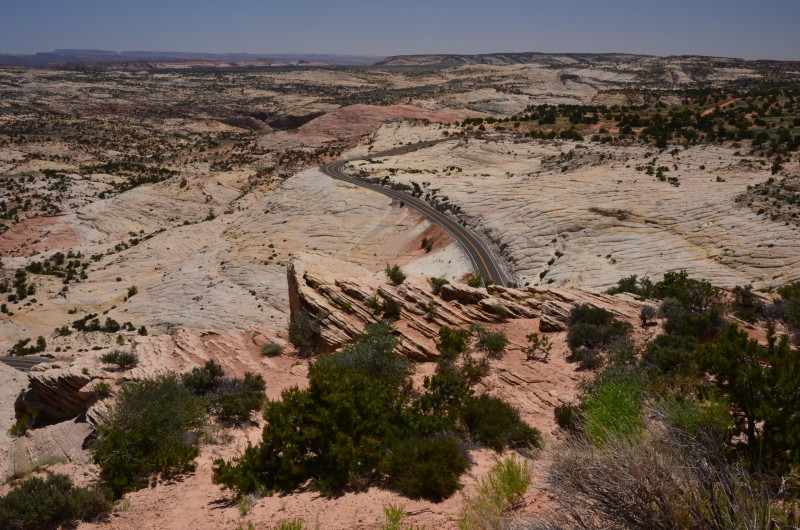
As the main transportation corridor through the Grand Staircase-Escalante National Monument, Utah Scenic Byway 12 is a designated All-American Road that begins near Bryce Canyon National Park and continues 124 miles north to the town of Torrey. Between the towns of Escalante and Boulder is one of the most scenic stretches of highway in the country. The terrain drops steeply down from both sides of the road, providing vistas of the vast redrock canyons below. From Head of the Rocks Overlook, you can look out over the colorful slickrock that existed as ancient sand dunes about 168 million years ago. As you take in the views, take a moment to ponder the fact that you’re in the last territory to be mapped in the lower 48 states.
What makes Dead Horse Point Overlook unforgettable?
It offers a dramatic 2,000-foot drop view over the Colorado River and canyon maze below.
Why visit Island in the Sky’s Grand View Point?
You can see endless canyons stretching to the horizon from this breathtaking perch.
What’s special about Bryce Canyon’s Inspiration Point?
It showcases towering hoodoos glowing orange and pink at sunrise and sunset.
Where can you get a panoramic view in Zion National Park?
Canyon Overlook Trail leads to a stunning vista of Zion’s main canyon after a short hike.
Why is Muley Point Overlook worth the drive?
It delivers vast, silent views over Monument Valley and the San Juan River far below.


